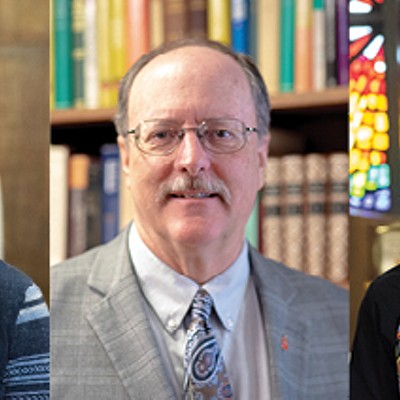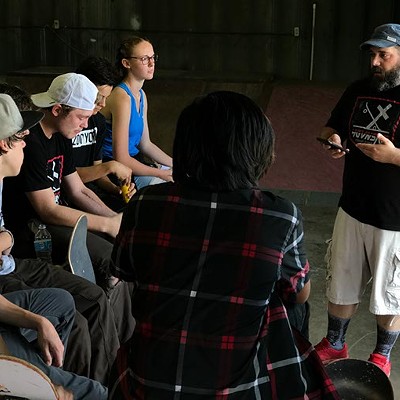But that was more than half a century ago, when the church was a key part of the Oklahoma City black community and the civil rights movement. There, King preached a sermon as an audition to be the church’s full-time pastor. Ironically, church leaders thought King was too young to lead a congregation of that size.
Calvary Baptist was the site where sit-ins began and ended and was a rallying point for civil rights marches led by the late Oklahoma City icon and former state lawmaker Clara Luper in the late 1950s and early 1960s. The church also welcomed the 1952 NAACP meeting that drew notable speakers U.S. Senator Hubert Humphrey, Walter Reuther and Marshall, who was appointed as the first black U.S. Supreme Court Justice in 1967.
But after years of deterioration, the church’s small congregation could no longer sustain the building and it fell into disrepair. Damage included stained-glass windows that were blown out when the Alfred P. Murrah Building bombing occurred in 1995. Although the windows were replaced, structural and interior damage remained. Services eventually were moved into the basement.
Faced with caved-in ceilings, significant water problems and a dilapidated foundation, it was unclear if the building could ever be restored to its former glory.
But one man had hope. In January 2012, local attorney Dan Davis walked into the empty building and experienced an epiphany. The church, he recalled thinking at the time, would be his new office.
A rebirth
The
euphoric feeling Davis experienced was replaced by the reality of
renovating a historic building designed and constructed by black
architect and church member Russell Benton Bingham. Some records
indicate the church was built in 1922 and 1923, but other sources show
the building was constructed shortly after the turn of the century.
Davis
and his wife, Joy, purchased the old church building in March 2012 for
$700,000 and spent more than a year and a lot more money renovating the
historic building. His law practice moved to its new offices in August.
Before that move, though, he was nervous.
“I
really didn’t picture it as a great law office. I just knew it could be
a beautiful, beautiful building in a cool part of town,” Davis said.
Calvary Baptist Church, 300 N.
Walnut Ave., looked “horrible” with innumerable construction issues.
“It was just a disaster,” Davis said.
At
one point, the sanctuary was filled with scaffolding from top to bottom
as construction crews worked to restore the building’s interior to what
it was in 1978, when the church was placed on the National Register of
Historic Places.
It
wasn’t easy, but the sanctuary is complete with its original wood
floors, pews and even the podium that King and Marshall spoke from.
After decades of use and abuse, the wood floors show marks indicative of
church members tapping their shoe heels to the upbeat gospel music.
Also, the building’s exterior and stained glass have been restored.
Mixing
new with old, law offices occupy the balcony of the sanctuary, which is
glassed-off, and now offers a commanding view of the podium, the choir
loft and the entire stage area.
“We
appreciate the building so much, and to see it come alive again is
tremendous,” Davis said. “I’m honored to walk in here every day. We’re
very happy the building has been brought back to life.”
Architectural wonder
Meshing
a 100-year-old building with modern technology, engineering and
architecture proved to be another feat. “Everything exceeded our
expectations,” Davis said. “We knew we would spend more than we thought.
We shattered our budget, but it’s been worth every penny.”
Project
architect Omar Khoury, of MODA Architecture, said maintaining the
church’s historical integrity was critical. “At the same time, we wanted
to make it functional for the new use.”
Davis and Khoury agree the stained-glass windows are an inspiration to anyone who visits the building.
“The sight of those windows takes your breath away,” Khoury said.
Khoury
conducted a significant amount of historical research before reaching a
final decision on the new design. “The historical aspect of it, the age
of the building and the function it had during the civil rights
movement was moving,” he said.
Community reservation
As the Davises sought to purchase the church building in 2012, black community members expressed reservations, but that changed.
“What they wanted to emphasize to us was the role the church played in the desegregation of Oklahoma City,” Davis said.
Since the building has been restored, black leaders, including Oklahoma County Commissioner Willa Johnson, have voiced approval.
“It’s
important the building is preserved, and I’m grateful to them,” she
said. “It was significant to the African- American race and important to
the civil rights movement.”











